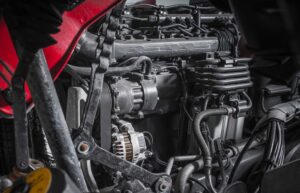“Our end-to-end solution will help drivers seamlessly adapt to the new mandate, save significant time and money, and ultimately make meaningful progress toward reduced carbon emissions,” said Greg Colvin, Senior Director of Solutions Engineering at Zonar
This certification came with what Zonar called “rigorous assessements and approval processes.”
“After providing the requisite emissions data and supporting information, Zonar has officially been granted an executive order to provide its OBD device and over-the-air emissions monitoring service to customers, the release stated.
“As the first certified telematics provider of OBD testing devices, Zonar is proud to provide a solution that will automatically perform emission checks while fleet vehicles are on route ensuring compliance, eliminating downtime, and reducing costly logistical nightmares due to rerouting vehicles to testing centers for a required scan,” said Greg Colvin, Senior Director of Solutions Engineering at Zonar. “Our end-to-end solution will help drivers seamlessly adapt to the new mandate, save significant time and money, and ultimately make meaningful progress toward reduced carbon emissions. This is a major achievement as we enter the final stage of work for our in-market solution to be released prior to the regulatory deadline.”
Zonar stated that heavy-duty truck emissions of nitrogen oxide and particulate matter have been reduced by 99% over the last two decades,
Such a feat likely significantly improves air quality and public health.
“To maintain this progress and further combat climate change, CARB’s CTC program aims to reduce smog-forming and carcinogenic air pollutants produced by all commercial vehicles that travel through California,” Zonar’s release stated. “This accounts for a significant portion of the industry as CARB estimates over 1.8 million medium- and heavy-duty vehicles operate daily in California.”
By combining regular vehicle testing with advanced emissions monitoring, OBD testing devices must scan every CTC regulatory-required vehicle in a fleet at the beginning of its 90-day compliance intervals (based on vehicles’ VIN or date of registration) to give fleets adequate time to identify and schedule emissions-related repairs as needed to pass. Fleets will have two emissions scanning options: a handheld shop tool plugged into the OBD port operated by a certified technician; or an OBD device installed into the vehicle which automatically performs scans and sends the data over-the-air directly to CARB. If a CTC-regulatory required vehicle is unable to pass an emissions test, consequences may include fines, citations, and/or vehicle registration holds.
Beginning January 1, 2025, any commercial vehicle traveling to or through California will be required to undergo testing twice per year. In 2027, vehicles will be required to test four times per year.
Bruce Guthrie is an award-winning journalist who has lived in three states including Arkansas, Missouri and Georgia. During his nearly 20-year career, Bruce has served as managing editor and sports editor for numerous publications. He and his wife, Dana, who is also a journalist, are based in Carrollton, Georgia.








